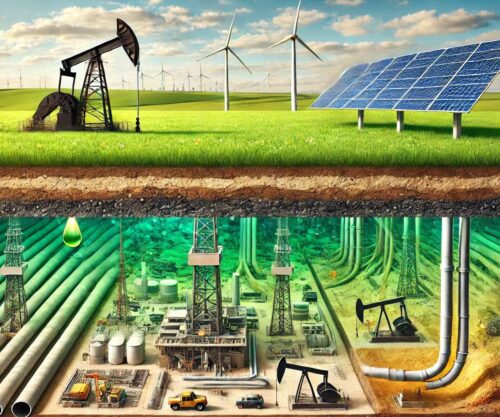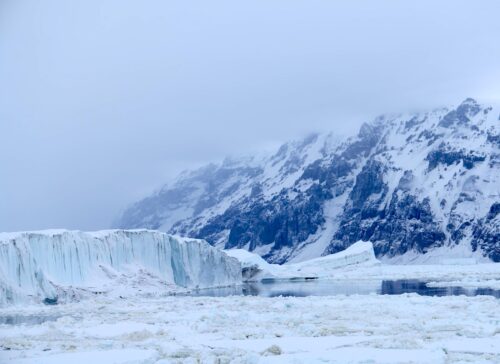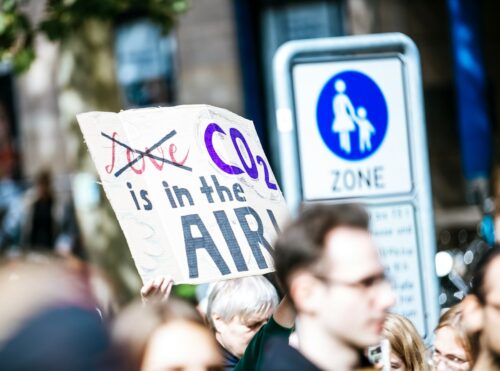 Three years ago I published a long article at Forbes arguing that solar panels weren’t clean but in fact, produced 300 times more toxic waste than high-level nuclear waste.
Three years ago I published a long article at Forbes arguing that solar panels weren’t clean but in fact, produced 300 times more toxic waste than high-level nuclear waste.
But in contrast to nuclear waste, which is safely stored and never hurts anyone, solar panel waste risks exposing poor trash-pickers in sub-Saharan Africa.
The reason is that it was so much cheaper to make new solar panels from raw materials than to recycle them, and would remain that way, given labor and energy costs.
My reporting was near-universally denounced. The most influential financial analyst of the solar industry called my article, “a fine example of ‘prove RE [renewable energy] is terrible by linking lots of reports which don’t actually support your point but do show that the RE industry in the West considers and documents its limited impacts extremely thoroughly.’”
An energy analyst who is both pro-nuclear and pro-solar agreed with her, saying “I looked into this waste issue in the past and concur with [her].”
The Guardian said solar panel waste was a “somewhat ironic concern from [me], a proponent of nuclear power, which has a rather bigger toxic waste problem” adding that “broken panels … are relatively rare except perhaps in the wake of a natural disaster like a hurricane or earthquake.”
But when reporters eventually looked into the issue they came to the same conclusions I had.
In 2019, The New York Times published a long article about toxic old solar panels and batteries causing “harm to people who scavenge recyclable materials by hand” in poor African communities.
In 2020, Discover magazine confirmed that “it is often cheaper to discard them in landfills or send them to developing countries.
As solar panels sit in dumps, the toxic metals they contain can leach out into the environment and possibly pose a public health hazard if they get into the groundwater supply.”
Still, each of those articles stressed that some solar panels were already being recycled and that more of them one day would be, which was what many of my original critics had pointed out.
“The European Union requires solar companies to collect and recycle their panels,” noted Discover magazine, “with the cost of recycling built into the selling price.”
The solar analyst who accused me of making unsubstantiated claims said the reason “there are few solar panels being recycled to date [is] because most of them are still working fine.”
But a major new study of the economics of solar, published in Harvard Business Review (HBR), finds that the waste produced by solar panels will make electricity from solar panels four times more expensive than the world’s leading energy analysts thought.
“The economics of solar,” write Atalay Atasu and Luk N. Van Wassenhove of Institut Européen d’Administration des Affaires, one of Europe’s leading business schools, and Serasu Duran of the University of Calgary, will “darken quickly as the industry sinks under the weight of its own trash.”
Solar’s Dark Side
Conventional wisdom today holds that the world will quadruple the number of solar panels in the world over the next decade.
“And that’s not even taking into consideration the further impact of possible new regulations and incentives launched by the green-friendly Biden administration,” Atasu, Wassenhove, and Duran write in HBR.
But the volume of solar panel waste will destroy the economics of solar even with the subsidies, they say.
“By 2035,” write the three economists, “discarded panels would outweigh new units sold by 2.56 times. In turn, this would catapult the LCOE (levelized cost of energy, a measure of the overall cost of an energy-producing asset over its lifetime) to four times the current projection.”
The solar industry, and even supposedly neutral energy agencies, grossly underestimated how much waste solar panels would produce.
The HBR authors, all of whom are business school professors, looked at the economics from the point of view of the customer, and past trends, and calculated that customers would replace panels far sooner than every 30 years, as the industry assumes.
“If early replacements occur as predicted by our statistical model,” they write, solar panels “can produce 50 times more waste in just four years than [International Renewable Energy Agency] IRENA anticipates.”
The HBR authors found that the price of panels, the amount solar panel owners are paid by the local electric company, and sunlight-to-electricity efficiency determined how quickly people replaced their panels.
“Alarming as they are,” they write, “these stats may not do full justice to the crisis, as our analysis is restricted to residential installations. With commercial and industrial panels added to the picture, the scale of replacements could be much, much larger.”
What about recycling? It’s not worth the expense, note the HBR authors. “While panels contain small amounts of valuable materials such as silver, they are mostly made of glass, an extremely low-value material,” they note. As a result, it costs 10 to 30 times more to recycle than to send panels to the landfill.
The problem is the sheer quantity of hazardous waste, which far exceeds the waste produced by iPhones, laptops, and other electronics. The volume of waste expected from the solar industry, found by a team of Indian researchers in 2020, was far higher than from other electronics.
“The totality of these unforeseen costs could crush industry competitiveness,” conclude the HBR authors. “If we plot future installations according to a logistic growth curve capped at 700 GW by 2050 (NREL’s estimated ceiling for the U.S. residential market) alongside the early replacement curve, we see the volume of waste surpassing that of new installations by the year 2031.”
It’s Not Just Solar
“The same problem is looming for other renewable-energy technologies. For example, barring a major increase in processing capability, experts expect that more than 720,000 tons worth of gargantuan wind turbine blades will end up in U.S. landfills over the next 20 years.
According to prevailing estimates, only five percent of electric-vehicle batteries are currently recycled – a lag that automakers are racing to rectify as sales figures for electric cars continue to rise as much as 40% year-on-year.”
But the toxic nature of solar panels makes their environmental impacts worse than just the quantity of waste. Solar panels are delicate and break easily.
When they do, they instantly become hazardous, and classified as such, due to their heavy metal contents. Hence, used solar panels are classified as hazardous waste.
The authors note that “this classification carries with it a string of expensive restrictions — hazardous waste can only be transported at designated times and via select routes, etc.”
Beyond the shocking nature of the finding itself is what it says about the integrity and credibility of IRENA, the International Renewable Energy Agency.
It is an intergovernmental organization like the Intergovernmental Panel on Climate Change, funded by taxpayers from the developed nations of Europe, North America, and Asia, and expected to provide objective information. Instead, it employed unrealistic assumptions to produce results more supportive of solar panels.
IRENA acted like an industry association rather than as a public interest one. IRENA, noted the HBR reporters, “describes a billion-dollar opportunity for [the] recapture of valuable materials rather than a dire threat.”
IRENA almost certainly knew better. For decades, consumers in Germany, California, Japan, and other major member nations of IRENA, have been replacing solar panels just 10 or 15 years old. But IRENA hadn’t even modeled solar panel replacements in those time frames.
IRENA wasn’t the only organization that put out rose-tinted forecasts to greenwash solar. For years, the solar industry and its spokespersons have claimed that panels only “degrade” — reduce how much electricity they produce — at a rate of 0.5% per year.
But new research finds that solar panels in use degrade twice as fast as the industry claimed. And that report came on the heels of a separate report which found that solar panels have been suffering a rising failure rate even before entering service.
“One in three manufacturers experienced safety failures relating to junction box defects, an increase from one in five last year,” noted an industry reporter. The “majority of failures were prior to testing, straight from the box.”
Blinded By The Light
Dealing with the problem requires that government regulators clamp down on solar. “A first step to forestalling disaster,” write the HBR authors, “may be for solar panel producers to start lobbying for similar legislation in the United States immediately, instead of waiting for solar panels to start clogging landfills.”
But that’s unlikely since such legislation would significantly increase the cost of solar, and thin profit margins mean that many solar companies would likely go bankrupt. The result is a self-reinforcing feedback loop.
“If legislation comes too late, the remaining players may be forced to deal with the expensive mess that erstwhile Chinese producers left behind.”
As such, taxpayers will likely have to subsidize the clean-up of solar panel waste. “Government subsidies are probably the only way to quickly develop capacity commensurate with the magnitude of the looming waste problem,” they write.
None of this means there’s no role whatsoever for solar panels, or that they are not ingenious machines.
Like many others, I have long been filled with a sense of wonder in how they convert sunlight, photons, into electrons, and I have solar panels in my backyard. Solar panels power satellites. And they can be an important way to generate electricity in off-grid areas.
But solar panels cannot be a primary energy source like nuclear, natural gas, or coal, for inherently physical reasons relating to the unreliable and dilute nature of their “fuel,” sunlight. Low power densities must induce higher material intensity and spatial requirements, and thus higher physical costs.
Even as the cost of solar panels has come down, the cost of producing reliable grid electricity with solar panels has risen, due to their weather-dependent nature, something that became evident in 2018, was recognized by University of Chicago economists in 2019, and was further supported by spiraling costs in renewables-heavy Germany and California in 2020.
The new research on the coming solar waste crisis, along with rising blackouts from renewables, reinforces the inherent flaws in solar and other forms of renewable energy. Over-relying on solar panels, and underestimating the need for nuclear and natural gas, resulted in California’s blackouts last summer.
It’s now clear that China made solar appear cheap with coal, subsidies, and forced labor. And in the U.S., we pay one-quarter of solar’s costs through taxes and often much more in subsidies at the state and local level.
And none of this even addresses the biggest threat facing solar power today, which are revelations that perhaps both key raw materials and the panels themselves are being made by forced labor in Xinjiang province in China.
Michael Shellenberger was Time Magazine’s “Hero of the Environment,” Green Book Award Winner, and president of Environmental Progress, a research and policy organization. He is also the author of several bestselling books, his latest being Apocalypse Never.
Read more at Substack



















It’s good to hear from Michael again. His book “Apocolypse Never” is an excellent read, especially when considering Michael’s credentials and background.
I never cease to be astonished at the ignorance of people who are just activist hacks. No matter the credibility of a writer or the facts presented, they will get out their fine-pointed needle and dig for dirt, then come up with the most ridiculous opposing comment which will, more often, be aimed at the individual and certainly not challenging the facts or the science. These people are cowards!!
Thanks Michael Shellenberger. This is a good article.
Not to mention Solar Panels like Wind Turbine take up good land that could be used to grow crops Livestock Grazing or Wildlife Area that’s someone the Eco-Freaks who support this alternative Energy never think about but they should
‘In contrast to nuclear waste which is safely stored and never harms anyone’ Quote from your second paragraph.
Are you funded by the nuclear industry?
Nuclear energy is smart.
Green energy is stupid.
Some don’t understand why I don’t have solar. After all, they know I believe in conservation. Instead, I cut up to twenty ton of firewood every year for household heating.
The rooves are for rain-water collection. Some of this we drink. I’m not drinking water from a roof with solar no matter how many laugh off the chemicals in these panels. Sure, one can filter and we do anyway, but that’s not enough to change my mind.
Farmers face stringent laws on what can be done with our land. If we were caught applying just some of the chemicals from solar panels directly to our land we’d be in big trouble. Yet, solar farms are deemed okay by the environmental protection agencies, even though we know chemical leakage is possible, especially in the implementation stage and in the removal stage (if the latter ever actually happens).
That’s one rule for some and another rule for others.
As I always say, never confuse environmentalism with conservation.
February 18, 2020 Wind, solar panels pose waste issues
This problem is only going to get worse, as Bloomberg reports, because right now the blades at the end of their lifespan are from wind power built more than a decade ago. There’s been a fivefold increase in installing wind turbines since, powered in large part by federal and state incentives and mandates.
https://www.wind-watch.org/news/2020/02/19/wind-solar-panels-pose-waste-issues/
November 11, 2020 ‘Carbon footprint of wind farms bigger than you think’
What is the carbon footprint of a 200m turbine, and how much concrete is poured into the ground to support 35 of them? An increase in the number of planning applications for onshore wind farms is leading to communities asking more questions, including why all that energy is required in the first place.
https://www.westmeathexaminer.ie/2020/11/10/carbon-footprint-of-wind-farms-bigger-than-you-think/
August 18, 2020 California blackouts a warning for states ramping up green power
The rolling blackouts across California serve as a cautionary tale as states across the country increase renewable energy and reduce their reliance on fossil fuels that can generate round-the-clock power but contribute to climate change.
https://www.wind-watch.org/news/2020/08/18/california-blackouts-a-warning-for-states-ramping-up-green-power/